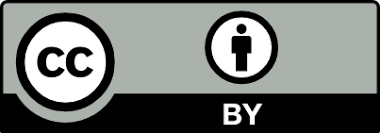Determination of the cyto-genotoxic effects of sodium acetate and sodium sulfite by MTT and comet assays
Abstract
Sodium acetate (NaA) and sodium sulfite (NaS) are two food additives in the class of preservatives. In this study, 3-(4,5-dimethyl thiazolyl-2)-2,5 diphenyltetrazolium bromide (MTT) assay was established to detect the cytotoxicity, and comet assay was used to determine the genotoxicity of NaA and NaS. For the MTT assay, human hepatocellular carcinoma (HepG2) cells were treated with different concentrations of each preservative (15.63, 31.25, 62.50, 125, 250, 500, 1000 and 2000 µg/mL for NaA; 3.91, 7.81, 15.62, 31.25, 62.50, 125, 250 and 500 µg/mL for NaS, respectively) for 24-h. non-treated wells used as control (only medium) were included. Comet assay was performed on lymphocytes isolated from healthy donors with multiple concentrations of NaA (15.63, 31.25, 62.50, 125, 250 µg/mL) and NaS (3.91, 7.81, 15.62, 31.25, 62.50 µg/mL) for 1 h. A negative (distilled water) and a positive control (100 µM H2O2) were also included. Significant cytotoxic activity was detected for NaA and NaS only at the highest concentration. Besides, both substances significantly increased DNA damage compared to the control at almost all concentrations (except at low concentrations). In general, both food preservatives exhibited weak cytotoxic effects in HepG2 cells. These food preservatives showed genotoxic activity, especially at higher concentrations.
Ethical Statement
This study was conducted with permission numbered 2023/121 obtained from the Amasya University Ethics Committee.
References
- Abd‐Elhakim, Y. M., Anwar, A., Hashem, M. M., Moustafa, G. G., Abo‐El‐Sooud, K. (2018). Sodium acetate, sodium acid pyrophosphate, and citric acid impact on isolated peripheral lymphocyte viability, proliferation, and DNA damage. Journal of Biochemical and Molecular Toxicology, 32(8), e22171. https://doi.org/10.1002/jbt.22171
- Altuğ, T. (2009). Gıda katkı maddeleri. Altuğ, T., Ed.; Kan Yılmaz Matbaacılık, İzmir, 1-16.
- Altunkaynak, P. (2023). Gıda Katkı Maddeleri Olan Sodyum Asetat ve Sodyum Sülfit’in in vitro İnsan Periferal Lenfositlerinde Genotoksik Etkileri, Yüksek Lisans Tezi, Amasya Üniversitesi Sağlık Bilimleri Enstitüsü, Ankara, 1-72.
- Azqueta, A., Muruzabal, D., Boutet-Robinet, E., Milic, M., Dusinska, M., Brunborg, G., Møller, P., Collins, A. R. (2019). Technical recommendations to perform the alkaline standard and enzyme-modified comet assay in human biomonitoring studies. Mutation Research/Genetic Toxicology and Environmental Mutagenesis, 843, 24-32. https://doi.org/10.1016/j.mrgentox.2019.04.007
- Collins, A., Koppen, G., Valdiglesias, V., Dusinska, M., Kruszewski, M., Møller, P., Rojas, E., Dhawan, A., Benzie, I., Coskun, E., Moretti, M., Speit, G., Bonassi, S., Moretti, M. (2014). The comet assay as a tool for human biomonitoring studies: the ComNet project. Mutation Research/Reviews in Mutation Research, 759, 27-39. https://doi.org/10.1016/j.mrrev.2013.10.001
- Costea, M. A., Rosan, C. A., Laslo, V., Agud, E., Purcarea, C., Vicas, S. I. (2024). The comet assay as a sustainable method for evaluating the genotoxicity caused by the soluble fraction derived from sewage sludge on diverse cell types, including lymphocytes, coelomocytes and Allium cepa L. cells. Sustainability, 16(1), 457. https://doi.org/10.3390/su16010457
- El-Hefny, I., Hozayen, W., AlSenosy, N., Basal, W., Ahmed, A., Diab, A. (2020). Evaluation of genotoxicity of three food preservatives in Drosophila melanogaster using smart and comet assays. Journal of Microbiology, Biotechnology and Food Sciences, 10(1), 38-41. https://doi.org/10.15414/jmbfs.2020.10.1.38-41
- European Food Safety Authority (EFSA) (2022a). Follow‐up of the re‐evaluation of sulfur dioxide (E 220), sodium sulfite (E 221), sodium bisulfite (E 222), sodium metabisulfite (E 223), potassium metabisulfite (E 224), calcium sulfite (E 226), calcium bisulfite (E 227) and potassium bisulfite (E 228). EFSA Journal, 20(11), e07594. https://doi.org/10.2903/j.efsa.2022.7594
- European Food Safety Authority (EFSA) (2022b). Support to EFSA in the risk assessment of food enzymes, food additives, food flavorings and feed additives, GP/EFSA/FIP/2022/01
- Ghasemi, M., Turnbull, T., Sebastian, S., Kempson, I. (2021). The MTT assay: utility, limitations, pitfalls, and interpretation in bulk and single-cell analysis. International Journal of Molecular Sciences, 22(23), 12827. https://doi.org/10.3390/ijms222312827
- Ghorbanpour, M., Shayanfar, A., Soltani, B. (2024). Copper pyrazole complexes as potential anticancer agents: evaluation of cytotoxic response against cancer cells and their mechanistic action at the molecular level. Coordination Chemistry Reviews, 498, 215459. https://doi.org/10.1016/j.ccr.2023.215459
- Hou, Y., Wang, W., Bartolo, P. (2024). The effect of graphene and graphene oxide induced reactive oxygen species on polycaprolactone scaffolds for bone cancer applications. Materials Today Bio, 24, 100886. https://doi.org/10.1016/j.mtbio.2023.100886
- Ishidate Jr, M., Sofuni, T., Yoshikawa, K., Hayashi, M., Nohmi, T., Sawada, M., Matsuoka, A. (1984). Primary mutagenicity screening of food additives currently used in Japan. Food and Chemical Toxicology, 22(8), 623-636. https://doi.org/10.1016/0278-6915(84)90271-0
- Knasmüller, S., Parzefall, W., Sanyal, R., Ecker, S., Schwab, C., Uhl, M., Mersch Sundermann, V., Williamson, G., Hietsch, G., Langer, T., Darroudi, F., Natarajan, A.T. (1998). Use of metabolically competent human hepatoma cells for the detection of mutagens and antimutagens. Mutation Research, 402, 185-202. https://doi.org/10.1016/S0027-5107(97)00297-2
- Maffini, M. V., Neltner, T. G., Vogel, S. (2017). We are what we eat: Regulatory gaps in the United States that put our health at risk. PLoS Biology, 15(12), e2003578. https://doi.org/10.1371/journal.pbio.2003578
- Mahoro, P., Kwon, E., Kim, Y. S., Bae, J. M., Kim, S. A., Cho, J., Cha, Y.S., Bae, J. M., Kim, S. (2024). In vitro and in vivo genotoxicity evaluation of ALP1018, a nanomineral food supplement. Food and Chemical Toxicology, 114437. https://doi.org/10.1016/j.fct.2024.114437
- Mamur S. (2022a). Cytotoxicity tests. In Genetic Toxicology. Unal, F., Yuzbasioglu, D. Eds.; Nobel Academic Publishing, pp. 31 -55, ISBN:9786254177262
- Mamur, S. (2022b). Geraniol, a natural monoterpene, identifications of cytotoxic and genotoxic effects in vitro. Journal of Essential Oil Research, 34(1), 54-64. https://doi.org/10.1080/10412905.2021.1974581
- Meng, Z., Zhang, B. (1999). Polymerase chain reaction-based deletion screening of bisulfite (sulfur dioxide)-enhanced gpt-mutants in CHO-AS52 cells. Mutation Research/Fundamental and Molecular Mechanisms of Mutagenesis, 425(1), 81-85. https://doi.org/10.1016/S0027-5107(99)00002-0
- Meng, Z., Qin, G., Zhang, B., Bai, J. (2004). DNA damaging effects of sulfur dioxide derivatives in cells from various organs of mice. Mutagenesis, 19(6), 465-468. https://doi.org/10.1093/mutage/geh058
- Mercan, U. (2004). Toksikolojide serbest radikallerin önemi. Yüzüncü Yıl Üniversitesi Veteriner Fakültesi Dergisi, 15(1), 91-96.
- Mohammadzadeh-Aghdash, H., Sohrabi, Y., Mohammadi, A., Shanehbandi, D., Dehghan, P., Dolatabadi, J. E. N. (2018). Safety assessment of sodium acetate, sodium diacetate and potassium sorbate food additives. Food Chemistry, 257, 211-215. https://doi.org/10.1016/j.foodchem.2018.03.020
- Mossman, T. (1983). Rapid colometric assay for cellular growth and survival: Application to proliferation and cytotoxicity assays. Journal of Immunological Methods, 65, 55-63.
- Neltner, T. G., Alger, H. M., Leonard, J. E., Maffini, M. V. (2013). Data gaps in toxicity testing of chemicals allowed in food in the United States. Reproductive Toxicology, 42, 85-94. https://doi.org/10.1016/j.reprotox.2013.07.023
- PubChem (2023). Sodium acetate LD50 concentrations. ttps://pubchem.ncbi.nlm.nih.gov/compound/Sodium-Acetate#section=Non-Human-Toxicity-Excerpts (accessed 28.04.2024).
- Sallam, K. I. (2007). Antimicrobial and antioxidant effects of sodium acetate, sodium lactate, and sodium citrate in refrigerated sliced salmon. Food Control, 18(5), 566-575. https://doi.org/10.1016/j.foodcont.2006.02.002
- Sigma-Aldrich (2023). Safety data sheet. https://www.sigmaaldrich.com/TR/en/sds/SIGALD/31454 (accessed 05.05.2024).
- Silva, M. M., Lidon, F. (2016). Food preservatives–An overview on applications and side effects. Emirates Journal of Food and Agriculture, 366-373. https://doi.org/10.9755/ejfa.2016-04-351
- Singh, N. P., McCoy, M. T., Tice, R. R., Schneider, E.L. (1988). A simple technique for quantitation of low levels of DNA damage in individual cells. Experimental Cell Research, 175(1), 184–191. https://doi.org/10.1016/0014-4827(88)90265-0
- Sun, J., Bi, L., Chi, Y., Aoki, K., Misumi, J. (2005). Effect of sodium acetate on cell proliferation and induction of proinflammatory cytokines: A preliminary evaluation. Food and Chemical Toxicology, 43(12), 1773-1780. https://doi.org/10.1016/j.fct.2005.05.020
- Ueno, S., Aoki, K., Ishizaki, M. (2002). Spore rec-assay by dry sheet medium culture plate for bacterial counts. Shokuhin Eiseigaku zasshi. Journal of the Food Hygienic Society of Japan, 43(1), 44-48. https://doi.org/10.3358/shokueishi.43.44
- Unal, F., Korkmaz-Demirtas F., Suludere, Z., Erol, O., Yuzbasioglu, D. (2021). Genotoxicity of two nanoparticles: titanium dioxide and zinc oxide. Gazi University Journal of Science, 34(4), 948-958. https://doi.org/10.35378/gujs.826911
- Xia, Y., Zhang, X.L., Jin, F., Wang, Q.X., Xiao, R., Hao, Z.H., Gui, Q.D., Sun, J. (2016). Apoptotic effect of sodium acetate on a human gastric adenocarcinoma epithelial cell line. Genetics and Molecular Research, 15 (4), gmr.15048375. http://doi.org/10.4238/gmr.15048375
- Yen, S. H. Y., Barrett, E., Coyle, D. H., Wu, J. H., Louie, J. C. Y. (2024). The distribution and co-occurrence of food additives in pre-packaged foods in Hong Kong. Food Control, 158, 110210. https://doi.org/10.1016/j.foodcont.2023.110210
- Zang, E., Jiang, L., Cui, H., Li, X., Yan, Y., Liu, Q., Chen, Z., Li, M. (2023). Only plant-based food additives: An overview on application, safety, and key challenges in the food industry. Food Reviews International, 39(8), 5132-5163. https://doi.org/10.1080/87559129.2022.2062764
Abstract
References
- Abd‐Elhakim, Y. M., Anwar, A., Hashem, M. M., Moustafa, G. G., Abo‐El‐Sooud, K. (2018). Sodium acetate, sodium acid pyrophosphate, and citric acid impact on isolated peripheral lymphocyte viability, proliferation, and DNA damage. Journal of Biochemical and Molecular Toxicology, 32(8), e22171. https://doi.org/10.1002/jbt.22171
- Altuğ, T. (2009). Gıda katkı maddeleri. Altuğ, T., Ed.; Kan Yılmaz Matbaacılık, İzmir, 1-16.
- Altunkaynak, P. (2023). Gıda Katkı Maddeleri Olan Sodyum Asetat ve Sodyum Sülfit’in in vitro İnsan Periferal Lenfositlerinde Genotoksik Etkileri, Yüksek Lisans Tezi, Amasya Üniversitesi Sağlık Bilimleri Enstitüsü, Ankara, 1-72.
- Azqueta, A., Muruzabal, D., Boutet-Robinet, E., Milic, M., Dusinska, M., Brunborg, G., Møller, P., Collins, A. R. (2019). Technical recommendations to perform the alkaline standard and enzyme-modified comet assay in human biomonitoring studies. Mutation Research/Genetic Toxicology and Environmental Mutagenesis, 843, 24-32. https://doi.org/10.1016/j.mrgentox.2019.04.007
- Collins, A., Koppen, G., Valdiglesias, V., Dusinska, M., Kruszewski, M., Møller, P., Rojas, E., Dhawan, A., Benzie, I., Coskun, E., Moretti, M., Speit, G., Bonassi, S., Moretti, M. (2014). The comet assay as a tool for human biomonitoring studies: the ComNet project. Mutation Research/Reviews in Mutation Research, 759, 27-39. https://doi.org/10.1016/j.mrrev.2013.10.001
- Costea, M. A., Rosan, C. A., Laslo, V., Agud, E., Purcarea, C., Vicas, S. I. (2024). The comet assay as a sustainable method for evaluating the genotoxicity caused by the soluble fraction derived from sewage sludge on diverse cell types, including lymphocytes, coelomocytes and Allium cepa L. cells. Sustainability, 16(1), 457. https://doi.org/10.3390/su16010457
- El-Hefny, I., Hozayen, W., AlSenosy, N., Basal, W., Ahmed, A., Diab, A. (2020). Evaluation of genotoxicity of three food preservatives in Drosophila melanogaster using smart and comet assays. Journal of Microbiology, Biotechnology and Food Sciences, 10(1), 38-41. https://doi.org/10.15414/jmbfs.2020.10.1.38-41
- European Food Safety Authority (EFSA) (2022a). Follow‐up of the re‐evaluation of sulfur dioxide (E 220), sodium sulfite (E 221), sodium bisulfite (E 222), sodium metabisulfite (E 223), potassium metabisulfite (E 224), calcium sulfite (E 226), calcium bisulfite (E 227) and potassium bisulfite (E 228). EFSA Journal, 20(11), e07594. https://doi.org/10.2903/j.efsa.2022.7594
- European Food Safety Authority (EFSA) (2022b). Support to EFSA in the risk assessment of food enzymes, food additives, food flavorings and feed additives, GP/EFSA/FIP/2022/01
- Ghasemi, M., Turnbull, T., Sebastian, S., Kempson, I. (2021). The MTT assay: utility, limitations, pitfalls, and interpretation in bulk and single-cell analysis. International Journal of Molecular Sciences, 22(23), 12827. https://doi.org/10.3390/ijms222312827
- Ghorbanpour, M., Shayanfar, A., Soltani, B. (2024). Copper pyrazole complexes as potential anticancer agents: evaluation of cytotoxic response against cancer cells and their mechanistic action at the molecular level. Coordination Chemistry Reviews, 498, 215459. https://doi.org/10.1016/j.ccr.2023.215459
- Hou, Y., Wang, W., Bartolo, P. (2024). The effect of graphene and graphene oxide induced reactive oxygen species on polycaprolactone scaffolds for bone cancer applications. Materials Today Bio, 24, 100886. https://doi.org/10.1016/j.mtbio.2023.100886
- Ishidate Jr, M., Sofuni, T., Yoshikawa, K., Hayashi, M., Nohmi, T., Sawada, M., Matsuoka, A. (1984). Primary mutagenicity screening of food additives currently used in Japan. Food and Chemical Toxicology, 22(8), 623-636. https://doi.org/10.1016/0278-6915(84)90271-0
- Knasmüller, S., Parzefall, W., Sanyal, R., Ecker, S., Schwab, C., Uhl, M., Mersch Sundermann, V., Williamson, G., Hietsch, G., Langer, T., Darroudi, F., Natarajan, A.T. (1998). Use of metabolically competent human hepatoma cells for the detection of mutagens and antimutagens. Mutation Research, 402, 185-202. https://doi.org/10.1016/S0027-5107(97)00297-2
- Maffini, M. V., Neltner, T. G., Vogel, S. (2017). We are what we eat: Regulatory gaps in the United States that put our health at risk. PLoS Biology, 15(12), e2003578. https://doi.org/10.1371/journal.pbio.2003578
- Mahoro, P., Kwon, E., Kim, Y. S., Bae, J. M., Kim, S. A., Cho, J., Cha, Y.S., Bae, J. M., Kim, S. (2024). In vitro and in vivo genotoxicity evaluation of ALP1018, a nanomineral food supplement. Food and Chemical Toxicology, 114437. https://doi.org/10.1016/j.fct.2024.114437
- Mamur S. (2022a). Cytotoxicity tests. In Genetic Toxicology. Unal, F., Yuzbasioglu, D. Eds.; Nobel Academic Publishing, pp. 31 -55, ISBN:9786254177262
- Mamur, S. (2022b). Geraniol, a natural monoterpene, identifications of cytotoxic and genotoxic effects in vitro. Journal of Essential Oil Research, 34(1), 54-64. https://doi.org/10.1080/10412905.2021.1974581
- Meng, Z., Zhang, B. (1999). Polymerase chain reaction-based deletion screening of bisulfite (sulfur dioxide)-enhanced gpt-mutants in CHO-AS52 cells. Mutation Research/Fundamental and Molecular Mechanisms of Mutagenesis, 425(1), 81-85. https://doi.org/10.1016/S0027-5107(99)00002-0
- Meng, Z., Qin, G., Zhang, B., Bai, J. (2004). DNA damaging effects of sulfur dioxide derivatives in cells from various organs of mice. Mutagenesis, 19(6), 465-468. https://doi.org/10.1093/mutage/geh058
- Mercan, U. (2004). Toksikolojide serbest radikallerin önemi. Yüzüncü Yıl Üniversitesi Veteriner Fakültesi Dergisi, 15(1), 91-96.
- Mohammadzadeh-Aghdash, H., Sohrabi, Y., Mohammadi, A., Shanehbandi, D., Dehghan, P., Dolatabadi, J. E. N. (2018). Safety assessment of sodium acetate, sodium diacetate and potassium sorbate food additives. Food Chemistry, 257, 211-215. https://doi.org/10.1016/j.foodchem.2018.03.020
- Mossman, T. (1983). Rapid colometric assay for cellular growth and survival: Application to proliferation and cytotoxicity assays. Journal of Immunological Methods, 65, 55-63.
- Neltner, T. G., Alger, H. M., Leonard, J. E., Maffini, M. V. (2013). Data gaps in toxicity testing of chemicals allowed in food in the United States. Reproductive Toxicology, 42, 85-94. https://doi.org/10.1016/j.reprotox.2013.07.023
- PubChem (2023). Sodium acetate LD50 concentrations. ttps://pubchem.ncbi.nlm.nih.gov/compound/Sodium-Acetate#section=Non-Human-Toxicity-Excerpts (accessed 28.04.2024).
- Sallam, K. I. (2007). Antimicrobial and antioxidant effects of sodium acetate, sodium lactate, and sodium citrate in refrigerated sliced salmon. Food Control, 18(5), 566-575. https://doi.org/10.1016/j.foodcont.2006.02.002
- Sigma-Aldrich (2023). Safety data sheet. https://www.sigmaaldrich.com/TR/en/sds/SIGALD/31454 (accessed 05.05.2024).
- Silva, M. M., Lidon, F. (2016). Food preservatives–An overview on applications and side effects. Emirates Journal of Food and Agriculture, 366-373. https://doi.org/10.9755/ejfa.2016-04-351
- Singh, N. P., McCoy, M. T., Tice, R. R., Schneider, E.L. (1988). A simple technique for quantitation of low levels of DNA damage in individual cells. Experimental Cell Research, 175(1), 184–191. https://doi.org/10.1016/0014-4827(88)90265-0
- Sun, J., Bi, L., Chi, Y., Aoki, K., Misumi, J. (2005). Effect of sodium acetate on cell proliferation and induction of proinflammatory cytokines: A preliminary evaluation. Food and Chemical Toxicology, 43(12), 1773-1780. https://doi.org/10.1016/j.fct.2005.05.020
- Ueno, S., Aoki, K., Ishizaki, M. (2002). Spore rec-assay by dry sheet medium culture plate for bacterial counts. Shokuhin Eiseigaku zasshi. Journal of the Food Hygienic Society of Japan, 43(1), 44-48. https://doi.org/10.3358/shokueishi.43.44
- Unal, F., Korkmaz-Demirtas F., Suludere, Z., Erol, O., Yuzbasioglu, D. (2021). Genotoxicity of two nanoparticles: titanium dioxide and zinc oxide. Gazi University Journal of Science, 34(4), 948-958. https://doi.org/10.35378/gujs.826911
- Xia, Y., Zhang, X.L., Jin, F., Wang, Q.X., Xiao, R., Hao, Z.H., Gui, Q.D., Sun, J. (2016). Apoptotic effect of sodium acetate on a human gastric adenocarcinoma epithelial cell line. Genetics and Molecular Research, 15 (4), gmr.15048375. http://doi.org/10.4238/gmr.15048375
- Yen, S. H. Y., Barrett, E., Coyle, D. H., Wu, J. H., Louie, J. C. Y. (2024). The distribution and co-occurrence of food additives in pre-packaged foods in Hong Kong. Food Control, 158, 110210. https://doi.org/10.1016/j.foodcont.2023.110210
- Zang, E., Jiang, L., Cui, H., Li, X., Yan, Y., Liu, Q., Chen, Z., Li, M. (2023). Only plant-based food additives: An overview on application, safety, and key challenges in the food industry. Food Reviews International, 39(8), 5132-5163. https://doi.org/10.1080/87559129.2022.2062764
Details
| Primary Language | English |
|---|---|
| Subjects | Biochemistry and Cell Biology (Other) |
| Journal Section | Research Articles |
| Authors | |
| Early Pub Date | June 5, 2024 |
| Publication Date | July 15, 2024 |
| Submission Date | February 28, 2024 |
| Acceptance Date | May 10, 2024 |
| Published in Issue | Year 2024 |
Journal is licensed under a
CreativeCommons Attribtion-ShareAlike 4.0 International Licence 


Diamond Open Access refers to a scholarly publication model in which journals and platforms do not charge fees to either authors or readers.
Open Access Statement:
This is an open access journal which means that all content is freely available without charge to the user or his/her institution. Users are allowed to read, download, copy, distribute, print, search, or link to the full texts of the articles, or use them for any other lawful purpose, without asking prior permission from the publisher or the author. This is in accordance with the BOAI definition of open access.
Archiving Policy:
Archiving is done according to ULAKBİM "DergiPark" publication policy (LOCKSS).

